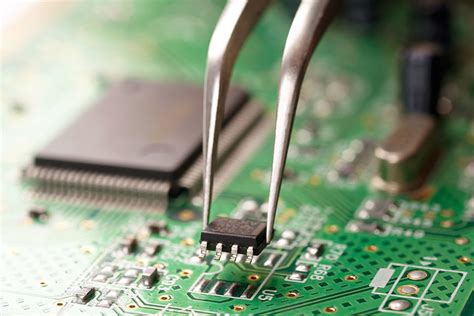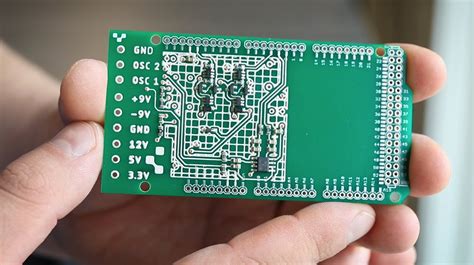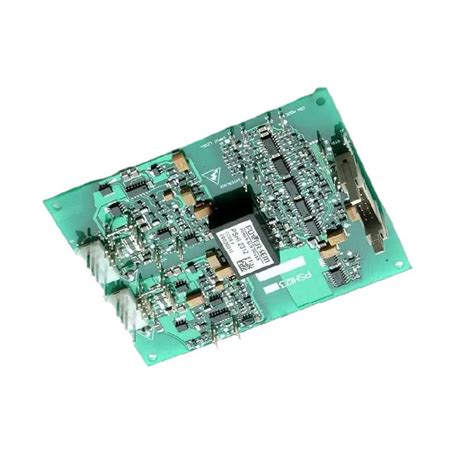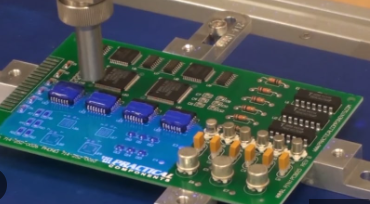Expert Circuit Board Assembly Services for Your Tech Solutions
Key Takeaways
When it comes to pcb assembly, it’s essential to understand the fundamental aspects and processes involved. This knowledge not only enhances the efficiency of pcba projects but also ensures that the end product meets both functional and quality standards. As explored throughout this article, employing cutting-edge techniques is crucial for modern circuit board assembly services. These techniques include automated assembly, precise soldering methods, and advanced testing processes that enhance reliability. It’s also important to highlight that quality assurance plays a pivotal role in ensuring that each component is correctly placed and soldered, minimizing defects. Furthermore, expert insights into the circuit board assembly process can aid in navigating common challenges such as design complexities and production timelines. Ultimately, staying informed about cost-effective solutions can significantly benefit your tech projects while keeping them within budget constraints. Integrating these takeaways will enable you to optimize your circuit board manufacturing needs and achieve successful outcomes in your technological endeavors.
Understanding Circuit Board Assembly: An Overview
Circuit board assembly, commonly referred to as PCB assembly or PCBA, is an essential process in the creation of electronic devices. This intricate procedure involves several steps, from design and layout to assembling various components onto a printed circuit board. Understanding the nuances of PCB assembly is critical for anyone looking to harness technology effectively. The process begins with the preparation of the circuit board, followed by the careful placement of components such as resistors, capacitors, and integrated circuits. This precise configuration is essential for ensuring that the electronic device functions as intended. Moreover, modern techniques in PCB assembly utilize advanced tools and machinery that enhance efficiency and accuracy. Adopting these latest methods not only streamlines production but also significantly mitigates the potential for errors during assembly. Quality control plays a pivotal role in this domain; each assembled board undergoes rigorous testing to ensure reliability and performance standards are met. By delving into effective PCBA practices, businesses can ensure their tech solutions are robust and competitive in today’s fast-paced market environment. Knowing the full scope of circuit board assembly lays a solid foundation for developing innovative technologies that meet evolving consumer demands.
Key Techniques in Circuit Board Manufacturing
The realm of pcb assembly or PCBA involves a variety of techniques that have been developed to enhance the efficiency and precision of the manufacturing process. One critical approach is surface mount technology (SMT), where components are mounted directly onto the surface of the circuit board, allowing for a denser layout and improved performance. Another key technique is through-hole technology, which involves inserting component leads into holes drilled into the board. This method is known for providing better durability in high-stress applications.
Additionally, advancements in robotics and automation have significantly streamlined the assembly process, enabling faster production times while minimizing human errors. Integrating quality control measures throughout the production stages ensures that each pcb assembly meets stringent standards. For instance, utilizing automated optical inspection (AOI) helps identify defects before moving on to soldering.
Achieving a reliable pcba also hinges on understanding materials science; selecting appropriate substrates and solder types can drastically affect both performance and longevity. > “Emphasizing early-stage design reviews can prevent costly alterations later on,” advises industry experts.
By harnessing these various techniques, manufacturers not only ensure higher quality assemblies but also stay competitive in a rapidly evolving technological landscape. Thus, mastering these methods is essential for delivering reliable tech solutions that meet customer demands effectively.
The Importance of Quality Assurance in Assembly Services
In the world of pcb assembly, ensuring high standards of quality is paramount. Quality assurance (QA) in assembly services encompasses a series of systematic processes that guarantee each printed circuit board assembly (pcba) meets the required specifications and performance standards. Effective QA not only minimizes defects but also enhances the reliability and functionality of the final product.
One critical aspect of QA is the implementation of strict testing protocols throughout the production process, including in-circuit testing, functional testing, and visual inspections. These methods help identify potential issues early, preventing costly revisions or faults that could arise later in the product lifecycle.
Another vital element is traceability, which allows manufacturers to track components and processes throughout production. This capability ensures that any quality concerns can be traced back to their origin, allowing for immediate corrective actions that preserve overall production integrity.
To illustrate these concepts further, consider the following table that highlights various quality assurance techniques used in pcba services:
| Quality Assurance Technique | Description | Benefits |
|---|---|---|
| In-Circuit Testing | Tests individual components on the PCB | Identifies defects early, reducing rework |
| Functional Testing | Evaluates complete functionality under operation | Ensures product meets design specifications |
| Visual Inspection | Manual or automated review for defects | Detects non-compliance with aesthetic standards |
| X-ray Inspection | Non-destructive testing for internal faults | Identifies hidden solder joint issues |
The integration of robust QA practices not only strengthens customer trust but also drives long-term business success. With high-quality pcb assembly, companies can innovate with confidence, knowing their products are built with precision and reliability at every step of the assembly process.
Expert Insights: Navigating the Circuit Board Assembly Process
Navigating the pcb assembly process can be complex yet rewarding when approached with the right knowledge and insights. The journey typically begins with carefully designed specifications that delineate every aspect of the product, from components to layout. Engaging an experienced team is crucial in this stage; they should possess a deep understanding of pcba techniques and materials, as well as an eye for potential pitfalls.
During assembly, it’s vital to consider thermal management and component placement, as these factors significantly affect the performance and reliability of the final board. Utilizing advanced soldering techniques, like Surface Mount Technology (SMT) or Through-Hole Technology, can enhance speed and accuracy while keeping costs manageable. Furthermore, effective collaboration between engineers and assembly technicians is imperative; their ongoing communication helps in mitigating errors that may arise due to misunderstandings about design intents or assembly requirements.
As you navigate through this intricate process, don’t overlook the significance of thorough testing post-assembly. Employing methods such as Automated Optical Inspection (AOI) or functional testing ensures that each assembled board meets quality standards before it reaches the consumer. By understanding these critical elements, stakeholders can facilitate a smooth pcb assembly process, achieving a product that reflects high-quality craftsmanship while adhering to timelines and budget constraints.
Common Challenges in Circuit Board Assembly and How to Overcome Them
In the realm of pcb assembly, several challenges can arise during the manufacturing and assembly of circuit boards. One prevalent issue is component placement accuracy. Even a slight misalignment can lead to significant performance issues in the final product. Utilizing advanced pick-and-place machines with high precision can greatly mitigate this concern. Another challenge is ensuring effective soldering; improper solder joints can result in failures that are often costly and time-consuming to rectify. This emphasizes the need for skilled technicians and robust quality control processes. Additionally, managing thermal issues during assembly is crucial, as excessive heat can damage sensitive components. Implementing thermal profiling during the pcba process allows for adjustments that maintain component integrity. Furthermore, supply chain disruptions may impact the availability of essential components. Establishing strong relationships with multiple suppliers ensures a steady supply for uninterrupted production. By addressing these challenges proactively, manufacturers can enhance the overall quality and reliability of their circuit board assemblies, paving the way for successful tech solutions.
Cost-Effective Solutions for Your Circuit Board Needs
In today’s competitive tech landscape, finding cost-effective solutions for your pcb assembly requirements is crucial for both startups and established businesses. The landscape of pcba has evolved significantly, allowing companies to optimize their production without compromising quality. One effective strategy is embracing modern manufacturing techniques that streamline the assembly process, thus reducing overheads. For example, implementing automated solutions not only enhances precision but also minimizes labor costs over time. Moreover, working with service providers who offer customized packages tailored to specific project needs can lead to substantial savings. Such targeted approaches ensure that you get the most out of your investment while maintaining the integrity of your product. It’s also essential to evaluate suppliers based on their ability to deliver quality pcba services at competitive rates, as this can directly affect both your production timeline and budget allocation. Consequently, leveraging these cost-effective strategies can result in enhanced profitability and a superior product ready for market launch, reinforcing the importance of making informed decisions in the circuit board assembly process.
Future Trends in Circuit Board Technology and Assembly
As technology continues to advance at a rapid pace, PCB assembly is evolving to meet the increasing demands for efficiency and integration in electronic devices. One notable trend is the rise of automated assembly processes, which not only boost productivity but also enhance the precision of components being placed on circuit boards. This is particularly important in today’s compact designs where space optimization is crucial. Another trend is the integration of flexible printed circuit boards (FPCBs), allowing for more innovative applications in wearables and other space-constrained electronics. Furthermore, environmental sustainability is becoming a focal point in PCBA, with companies seeking greener materials and manufacturing processes to reduce their environmental footprint. Advanced technologies like machine learning and AI are also playing a role in revolutionizing quality assurance within the circuit board assembly process, enabling predictive maintenance and quicker identification of defects. As these trends continue to shape the landscape of circuit board technology, it will be essential for manufacturers and service providers to adapt and embrace these innovations to remain competitive in the market.
Selecting the Right Service Provider for Your Tech Projects
When embarking on a tech project that requires pcb assembly or pcba, selecting the right service provider is crucial for ensuring the success and reliability of your electronic products. Start by evaluating potential providers based on their experience and expertise in circuit board assembly services. A company with a strong background in both prototype development and high-volume production can offer invaluable insights that can enhance your project. Pay attention to their manufacturing capabilities; modern circuit board manufacturers employ advanced techniques like surface mount technology (SMT) and through-hole technology, which are indicative of their commitment to quality. Furthermore, inquire about their quality assurance processes; a provider with stringent quality control measures will minimize defects, thereby saving time and costs associated with rework. It’s also essential to assess the provider’s customer service and communication skills; having a partner that keeps you informed throughout the pcba process can lead to smoother project execution. Lastly, consider their flexibility and willingness to adapt to your specific needs, as customization can often be a key factor in achieving the best outcomes for your tech projects.
Conclusion
In summary, investing in circuit board assembly services is vital for businesses looking to enhance their tech solutions. With the complexities of modern electronics, understanding the nuances of pcb assembly is essential. The insights shared throughout the article highlight that utilizing advanced pcba techniques can significantly optimize production efficiency and product quality. Choosing a service provider that incorporates rigorous quality assurance practices ensures that each assembly meets high standards, ultimately contributing to product reliability. As technology continues to evolve, staying informed about future trends in circuit board technology will enable businesses to adapt and thrive in the competitive landscape. By prioritizing these factors, companies can confidently navigate their projects toward successful outcomes while maintaining budget considerations and addressing common challenges in the industry.
FAQs
What is PCB assembly and why is it important?
PCB assembly (or PCBA) is the process of connecting electronic components to a printed circuit board. This is crucial as it transforms the board into a functional and reliable part of electronic devices. The quality of PCB assembly directly impacts the performance and longevity of your tech solutions.
What are the common techniques used in PCB assembly?
Several techniques are employed in PCB assembly, including Surface Mount Technology (SMT) and Through-Hole Technology. Each technique offers unique advantages suited to different applications, impacting overall product performance.
How does quality assurance play a role in PCB assembly services?
Quality assurance is vital in PCBA, as it ensures that each board meets strict specifications and standards. It involves rigorous testing processes to detect any issues before the final product reaches consumers, thus enhancing reliability.
What should I consider when choosing a PCB assembly service provider?
When selecting a provider for PCB assembly, consider their experience, technology capabilities, and quality standards. It’s essential to choose a provider that can meet your specific needs—whether that’s for quick prototypes or large-scale productions.
Are there cost-effective solutions available for PCB assembly?
Yes, many service providers offer competitive pricing models for PCB assembly without compromising on quality. It’s essential to evaluate quotes and services thoroughly to find an option that aligns with your budget while meeting your project requirements.







